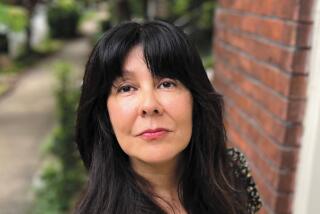Discoveries
Growing a Farmer
How I Learned to Live Off the Land
Kurt Timmermeister
W.W. Norton: 309 pp., $24.95
I consider myself a bit of an expert in this arena, having grown up and lived exclusively in big cities, all the while dreaming about becoming a farmer. Sure, the romantic stuff is seductive — the local this and that; the community of like-minded, rustic, well-read people; the delicious tastes of tomatoes, eggs and other foods untainted by pesticides. But you rarely read (unless you are deep into 4-H manuals) about where to begin, how to learn to be a farmer. Kurt Timmermeister seems fearless in this regard. He started a little cafe and bakery in Seattle, went in early every morning to make pastries and coffee, gathered a loyal clientele, decided he wanted a bit of land, bought 4 acres on Vashon Island (a ferry ride from the city) and moved steadily up the farming ladder, one step at a time.
He began with vegetables, then moved on to bees, some fruit trees, vinegar, sheep, goats, more acres, a cow named Dinah, delicious cheese (called Dinah’s cheese), butter and raw milk, chickens, then pigs, butchering and curing. Timmermeister learned purely from experience with a little help from neighbors and mentors along with a peek or two at a few books. He relied on his instincts and ethics, an innate understanding of what might be bad for the land, what felt right for the community and how to treat animals. Today, he strives to keep all the parts working in concert (the compost going back into the gardens, nothing wasted, nothing used that cannot be home-grown) — what he calls a “closed system.” What sets this book apart is its practical, calm, confidence-inspiring tone. The message is: Farming may not be easy, but just do it.
From the Land of the Moon
Milena Agus
Europa Editions: 108 pp., $15
“She wept almost every day in the month before the marriage.” Imagine this woman. At 30, no longer young, she’s begging her father not to marry her off to the respectable widower. The place is Sardinia, 1943 — so many houses already bombed, the dark pine trees by the ocean, the rocky coast. And so she marries and moves into his house, “where there is light from the south and from the sea, which invades fiercely until sunset, and makes everything sparkle.” Milena Agus’ novel of a granddaughter telling her grandmother’s story occurs in that sparkle of light, in the eyes of someone left behind, and is a cautionary tale. Unable to have children with her husband, the grandmother went to a spa, where she met a wounded soldier and fell in love. The novel takes on the feel of Marguerite Duras’ powerful little book, “The Lover” — pure passion in an enclosed (emotional and physical) space. She becomes pregnant, returns to her widower, has a son and longs for the veteran. This longing takes shape: It lingers in the house after her death; it lives on in the notebooks, poems and letters saved. It is inherited by her granddaughter, who tells this story. It does not dilute with time and death. It gets stronger. After all, fiction plays by different rules.
The Boy
A Holocaust Story
Dan Porat
Hill & Wang: 262 pp., $26
Dan Porat was transfixed by the photograph of the little boy, thrust from the Warsaw ghetto by Nazis, their guns pointed at the women and children, the little boy’s hands held in the air. It is a powerful image, testimony to the cowardice and cruelty of the Nazis. The photo was taken in spring 1943 and appeared in the Stroop Report, named after SS Gen. Jürgen Stroop, who organized the massacre and ordered the subsequent document. There were 125 copies of the Stroop Report, with the words “The Jewish Quarter of Warsaw Is No More!” emblazoned on the cover. It contained many photos, including the one of the boy, 7 or 8 years old, with the caption, “Pulled from the bunker by force.” For Porat it is a kind of ground zero — he moves outward from the photo to identify the moment, the generals and soldiers who engineered the destruction of the Warsaw ghetto and the people in the photographs. He follows the lives of two Jewish children, the boy and a teenage girl, and three Nazi criminals, including Stroop, before and after the war. A reader goes back, again and again, to the 60 photographs that accompany the text. It is like pinching one’s skin after a dream to see if one has woken in the same world in which one went to sleep. Or first opened “The Boy.”
Salter Reynolds is a Los Angeles writer.
More to Read
Sign up for our Book Club newsletter
Get the latest news, events and more from the Los Angeles Times Book Club, and help us get L.A. reading and talking.
You may occasionally receive promotional content from the Los Angeles Times.






